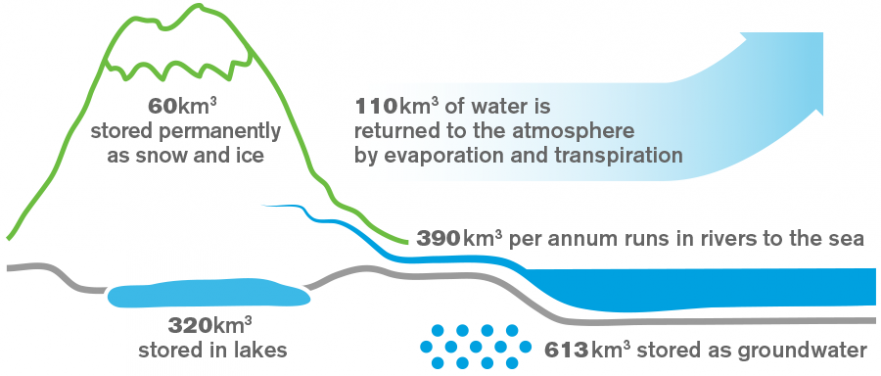Natural variability in rainfall and the limitations of weather forecasts can make dryland farming challenging. Dryland farmers apply fertiliser based on typical production. As a result, in a dry year a crop will not use all applied fertiliser. Lack of moisture limits plant growth and thus fertiliser uptake. This can leave excess nutrients in the soil that may leech into groundwater or run-off into rivers when rain arrives. One thing we know for sure is it always rains during autumn and winter in New Zealand – the question is when? Reliable irrigation gives farmers certainty that plant growth will occur and reduces the risk of nutrient loss.
Where is our water?
Modern irrigation is very energy efficient. Power costs are a significant component of operating irrigation, so a focus in recent years has been energy efficiency strategies which reduce costs. Irrigation systems are now designed to minimise power use. Newly developed technologies have greatly reduced the amount of energy required to operate an irrigation pump. A growing number of irrigators also monitor soil water levels before applying irrigation. This ensures actual energy use is optimised for production.
New irrigation schemes frequently have a hydroelectric power generation element using dams, channels or pipes. Most existing irrigation schemes are being modernised, mainly through piping the water supply system. Piping creates two environmental benefits. It ensures water is not lost through the supply system via leaky channels or evaporation. This means less water needs to be taken from the river. Piping also provides a pressurised water supply to the irrigator, often by using gravity. If you put water in a pipe and run it downhill you produced pressurised water. This removes or significantly reduces pumping costs.
A number of modern irrigation schemes have been developed to solve historic river and stream flow issues, while at the same time providing irrigation. The Opuha Dam in South Canterbury was designed to ensure the Opihi River did not run dry. The Opihi is now one of the best recreational fishing grounds in New Zealand. The dam can release flushing flows that simulate a natural flood. This helps prevent the build-up of algae in the river during summer. Central Plains Water in Selwyn is another example. It has been designed to replace groundwater takes with an abundant alpine river water supply. Taking less groundwater will improve stream flows into Te Waihora/Lake Ellesmere, improving its water quality and biodiversity.
Environmental grants and scholarships which support community initiatives to restore native vegetation and enhance local rivers are available through a growing number of irrigation schemes. Other schemes have created their own environmental restoration projects such as the Morven-Glenavy-Ikawai Irrigation company’s Waikakahi Stream project in South Canterbury.
Do you have a question about irrigation? Contact [email protected] or connect with us on Twitter or Facebook.


